Greenland
Hello, and welcome back.
On August 25, we arrived in Greenland, in a fashion.
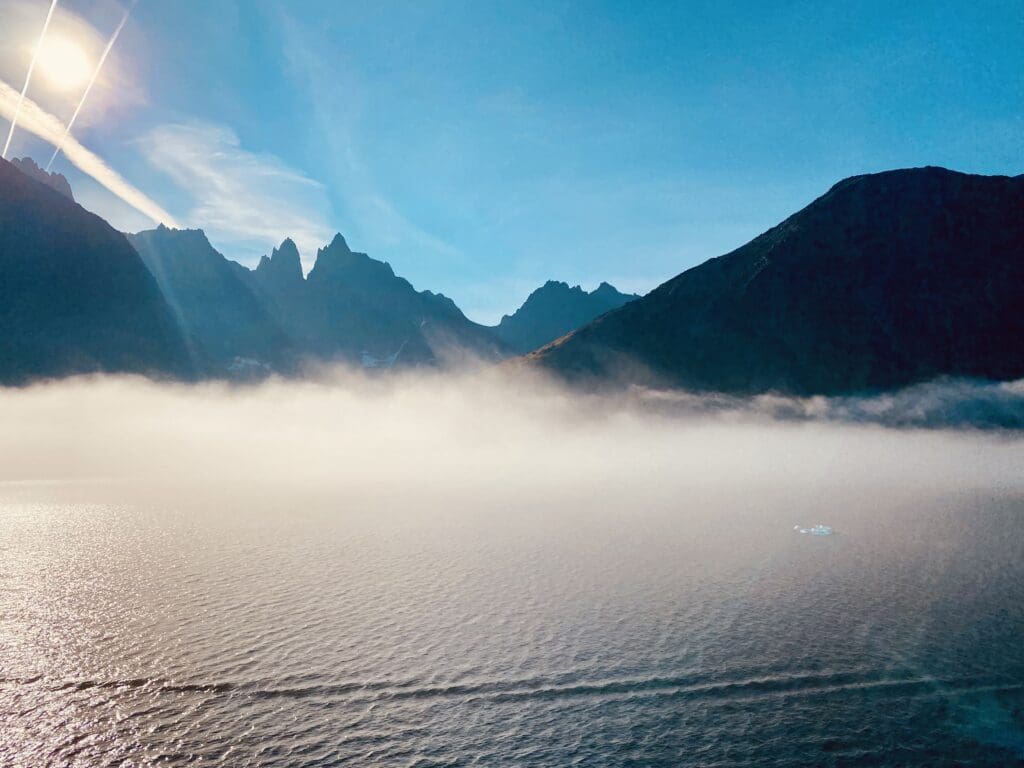
The captain of our ship juggled the schedule a bit, and took us on a tour of the Prins Christian Sund Fjord (a.k.a. Prince Christian Sound) on the southern tip of Greenland.
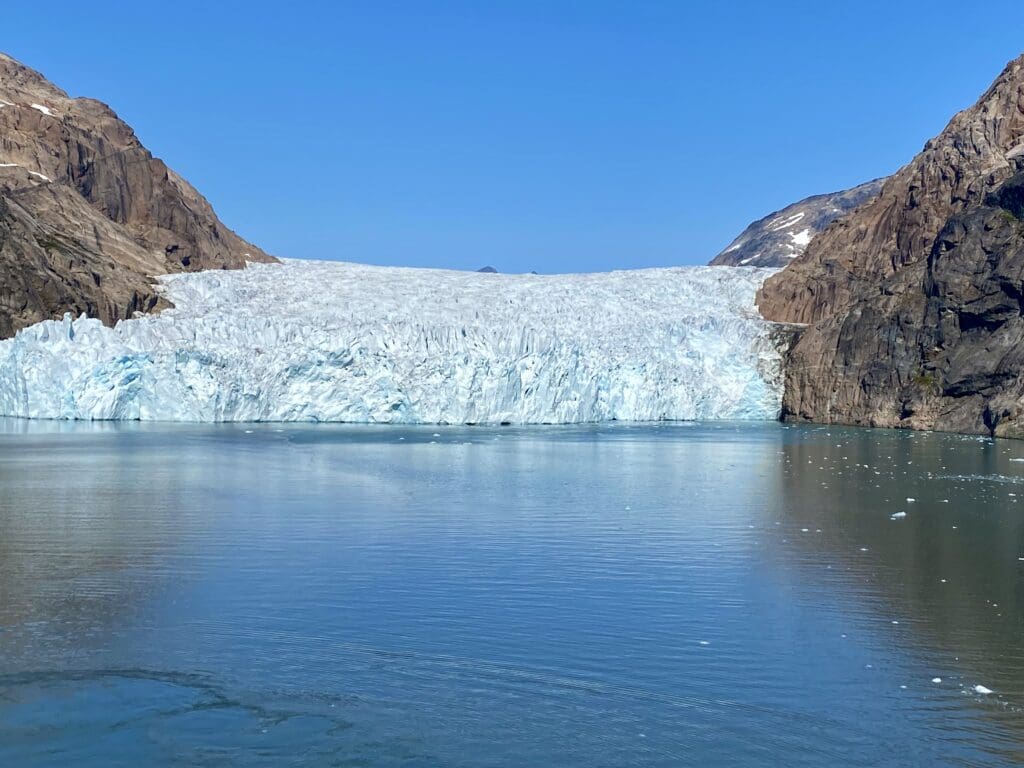
The fjord was very beautiful, and reminded us a great deal of the Chilean fjords, which we visited in January.
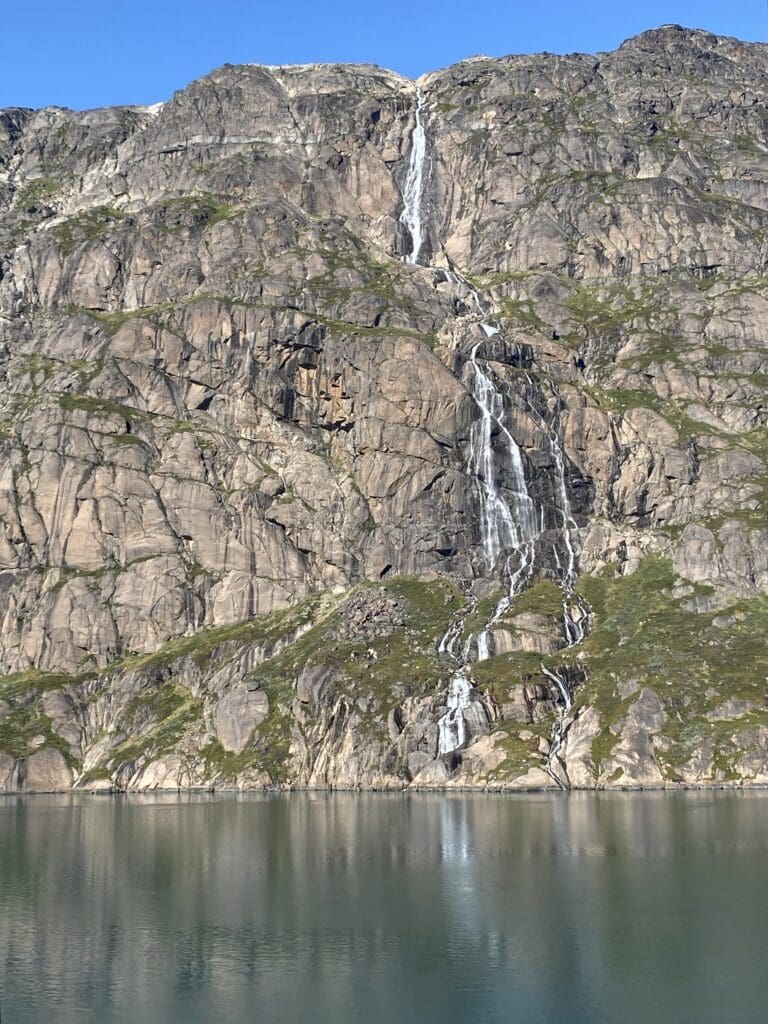
However, while Prins Christian has waterfalls, glaciers, and icebergs, it has considerably less snow and ice than its Arctic cousin, and is no where near as long, dead-ending at a glacier after 50 miles our so.
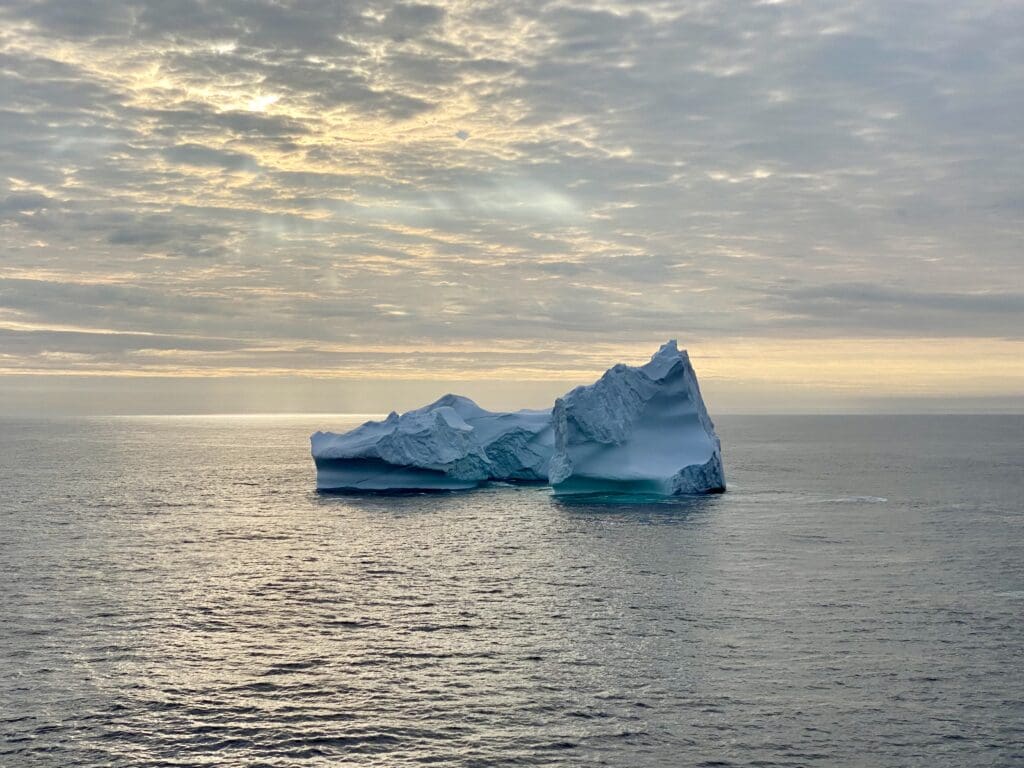
At one point, we saw the small, 100 person village of Aappilattoq along the frosty waterway. Pretty! The buildings were all strikingly colorful for such a remote location. The captain commented that this was one of the most remote villages in the world. (It was only accessible by going down the fjord 2 hours by boat to the North Atlantic, and then several more hours in the open sea to get to a small town.)
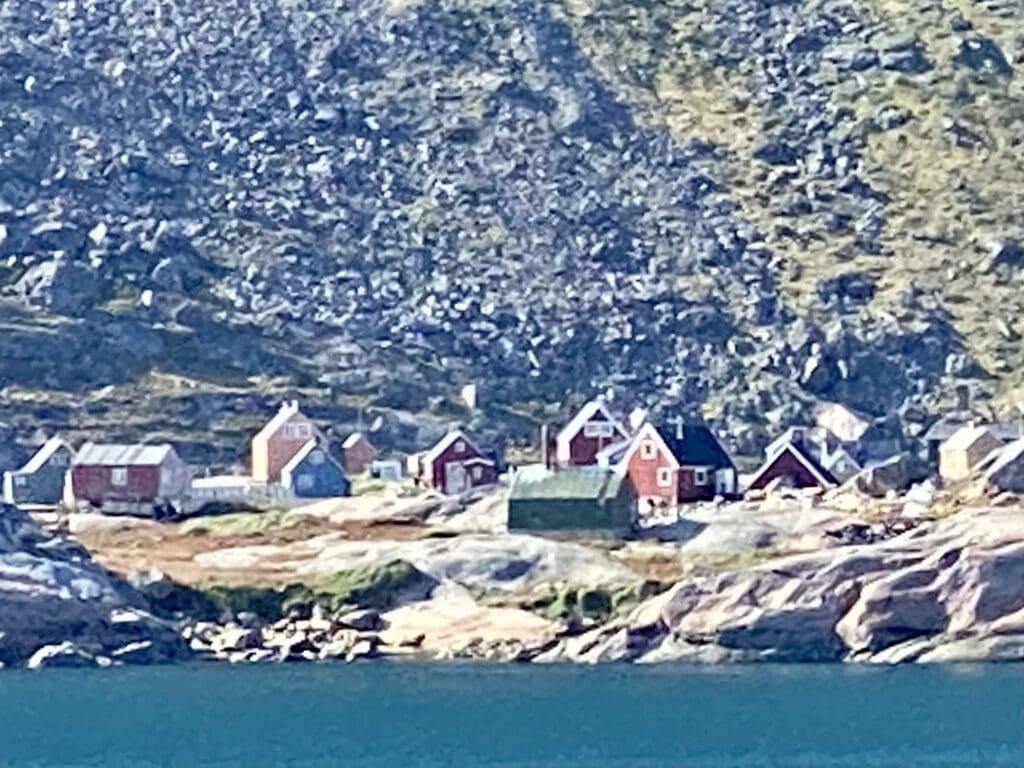
Greenland has a total population of just under 57,000 citizens. Is capital, and largest city, Nuuk (pronounced “Nook”) is home to 35% (20,000) of the country’s population.
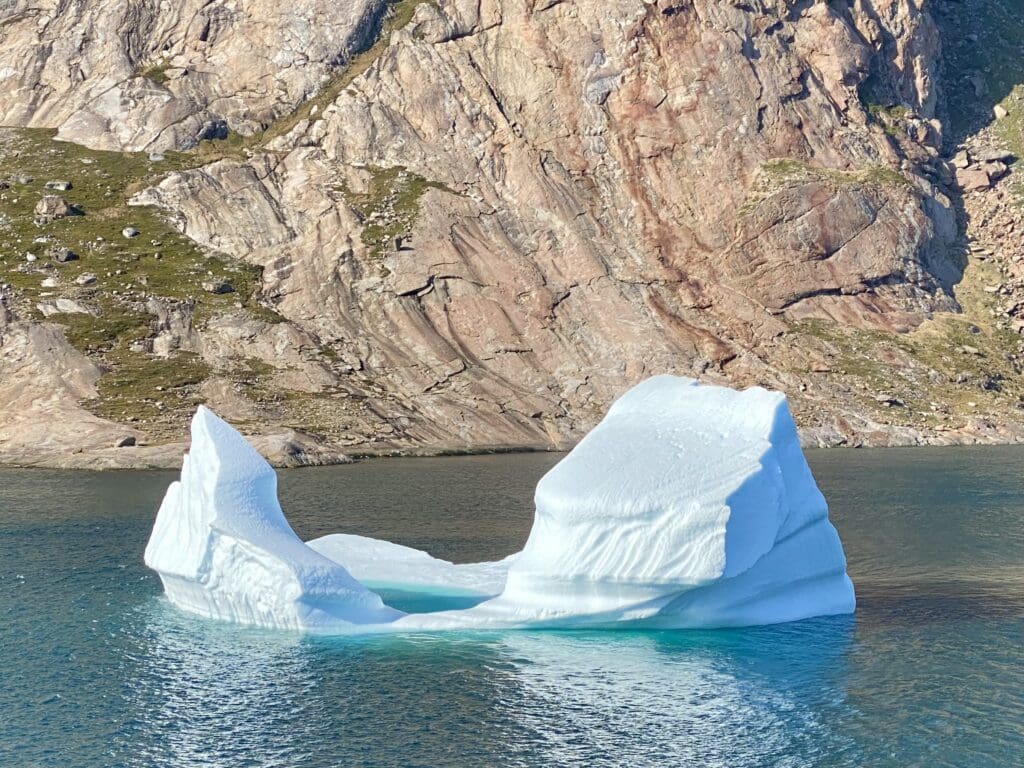
The official language is Kalaallisut (which is also known as Greenlandic) but virtually everyone speaks Dutch. And surprising, a majority of the population speak English. Their currency is the Danish Krone.
In addition to being absolutely beautiful, Greenland is huge, and is the earth’s largest island that is not a continent. The population density is so low, that there is only ~1 person per 10 square miles. Amazing!
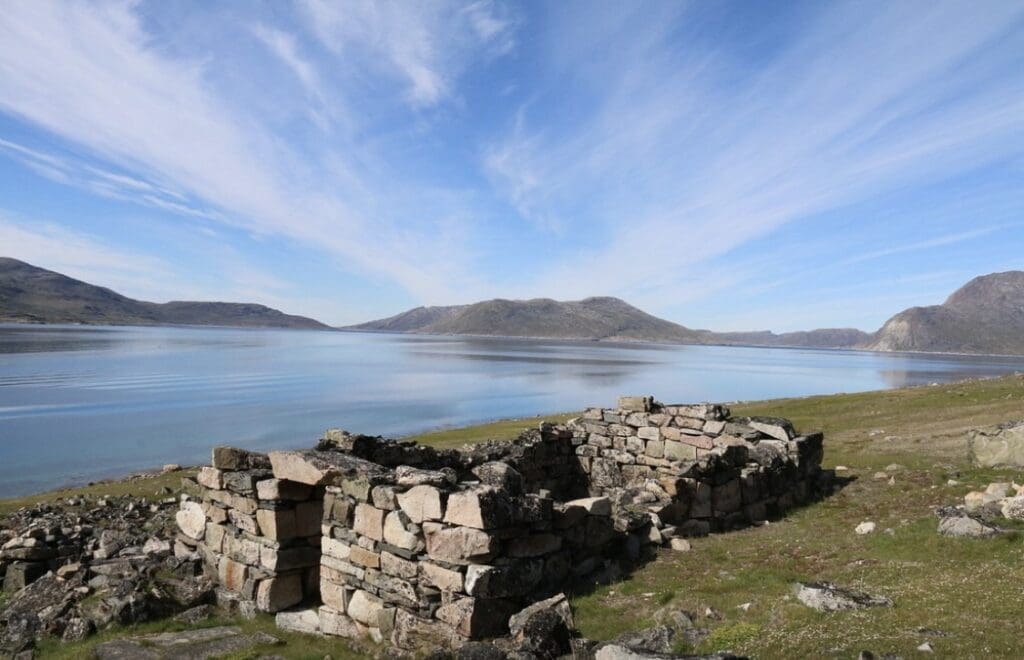
So when we visited (the tiny by comparison) island of Iceland, I had related how it is said that Iceland should be called Greenland and vise versa. But there is a bit more to it than that.
First off, while you can find green foliage here and there (primarily in the form of Arctic tundra) the country has very few trees and 80% of the island is covered in ice sheets. There is actually only one natural forest in the entire country. (One source I was reading even went so far as to state that a majority of the country’s trees were located in city parks!)
Also, unlike its Icelandic neighbor, Greenland has very few hot springs, volcanoes, etc.
So why do they call it Greenland? Well, as legend would have it, in the late 900 ADs, a Viking (ahem… “Wiking”, hee, hee!) by the name of Eric the Red (so named perhaps for his red-hot temper) was exiled from Norway.
Living in Iceland, the bad-boy eventually ventured to Snæland (which means Snowland). After roaming about, naming fjords and other parts of the island after himself, he eventually started a colony and built himself a house.
Being quite the spin-doctor, he returned to Iceland claiming to have discovered “Greenland” (essentially renaming the island of Snæland to make it sound more attractive).
Well, it did not take much time for him to run into additional troubles, and he was soon banished from Iceland as well. However, his marketing aficionado-ness paid off, and he was able to entice others, and he left Iceland with some 35 ships of pilgrims leaving Iceland for the (alleged) greener coasts of Greenland. While only about a third of these ships completed the voyage, the remainder arrived in Greenland in the 900 AD timeframe, and they all lived happily ever after…
There are not many towns in Greenland, but interestingly, due to the fjords and mountainous terrains, there are not any roads connecting any of the towns. In fact, the longest road in the country is less than 22 miles long. Hmmm…
In the olden days, the color of buildings indicate what each building was used for. That is no longer the case, and all of the villages and cities tend to be very colorful and picturesque. It is kind of humerus, but this change was driven by the availability of paint.
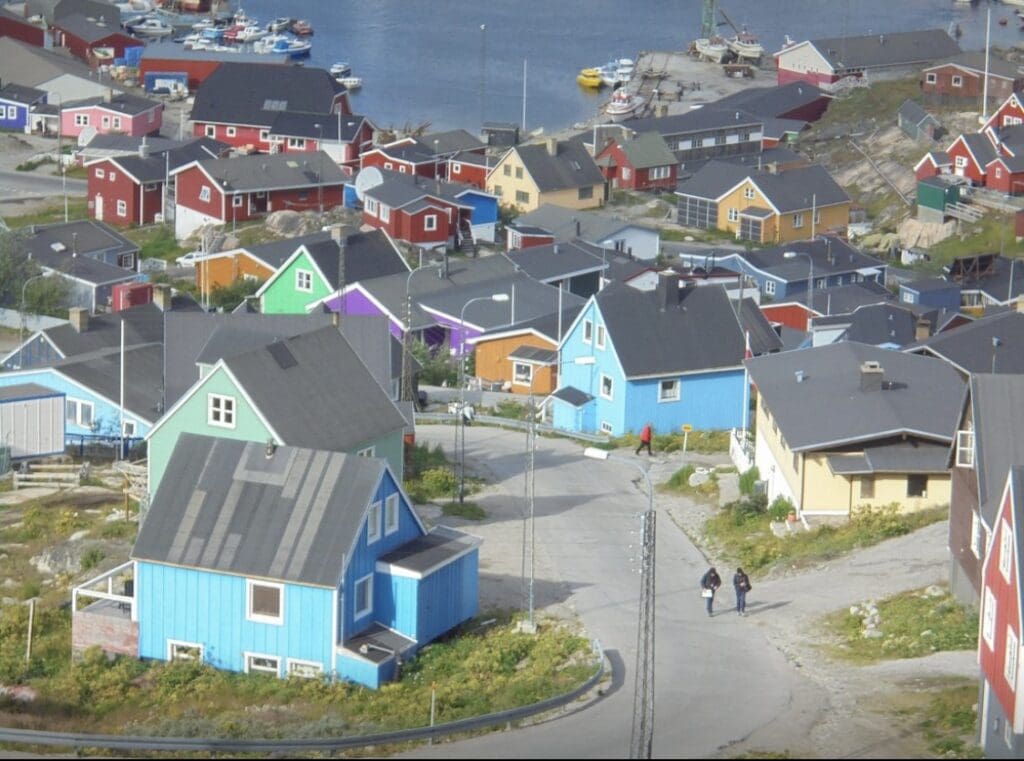
On August 26, we docked to spend a day in Qaqortoq (pronounced “cac • core • talk”). Tipping the scales at just over 3,200 residents, it is the 4th largest city in Greenland.
The town was primarily residential buildings stretching up a few roads above the town center. The town center had a few shops, a grocery store, and a few restaurants.
The people were very friendly. Our most notable memory will undoubtably be the bugs that swarm around one’s head as they walk around the town square. Luckily the were not mosquitos or biting insects, but there were a lot of them. I tried to talk about it with fellow travelers, nut it didn’t work out. (It bugs me in ways I can’t quite put into words when folk can’t distinguish between etymology and entomology…)

Also, the town has no sidewalks, making it hard to navigate the hilly streets that make up the town center. It was very pretty though, and we enjoyed a stroll about.
That evening, the captain informed us that there was a major storm approaching, and we would be unable to dock the following day in the capital of Nuuk (pronounced “Nook”). Too bad, because we had heard that it was very pretty.
Instead, we were heading to Canada a day early, and will be adding a day at Nova Scotia to our itinerary.
And so we ended out visit to Greenland, and can’t wait to share our tales of our visit to Canada in a few days.
Thanks again for checking in.
– Mike
“It’s not the number of books that matters, is it? It’s what one does with them.” – Gareth Brown, The Book of Doors

Recent Comments